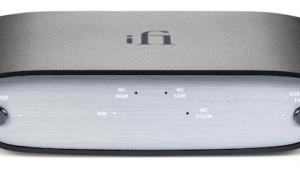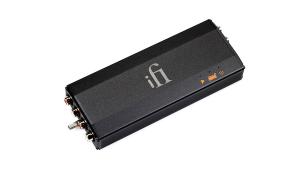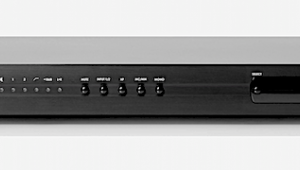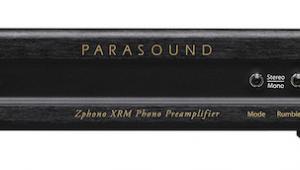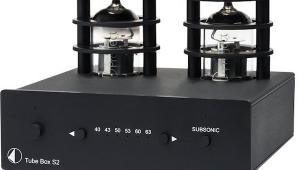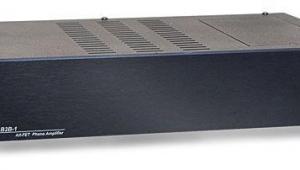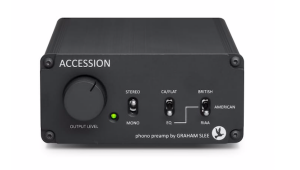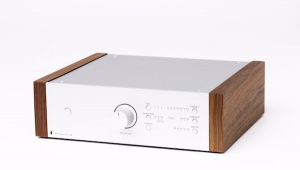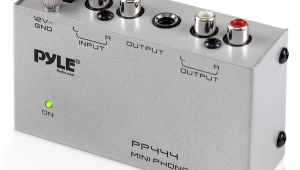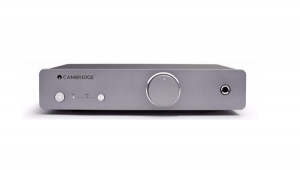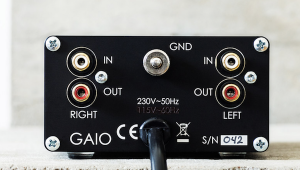Sutherland PhD MC phono preamplifier
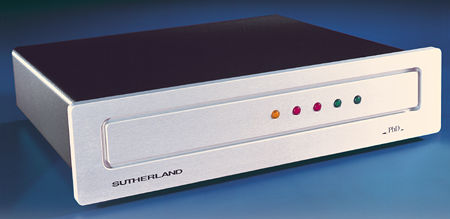
The PhD runs on 16 alkaline "D" cells. (I didn't compare the sound of Energizers to the sound of Duracells, but you're welcome to do so and report back.) As we all know, and as Ron Sutherland explains in the instructions, an amplifier doesn't make a signal "bigger," but basically modulates the output of the power supply—if that's not clean and stable, how can the sound be, especially with ultra-low-level signals from typical MC cartridges? Owners of Marcoff PPA-1 head amps, your 1979 purchases has been vindicated!
Sutherland says the batteries should last for more than 800 listening hours. He also claims that, thanks to high-value storage capacitance, low power-supply impedance is maintained as the batteries age, so the PhD's performance won't suffer—at least, not until you're listening in the middle of the night and the red lights come on to tell you the batteries are running low.
But I kid Chad and Ron. You'll be more likely to forget to turn the unit off, thus draining the batteries. So Sutherland has come up with a power-management system that awakens the PhD only when it senses stylus output. The system is so fast that my dropping the stylus in the groove was all it took to get the PhD out of bed every time. However, if you insist on a warmup period (Sutherland says the PhD doesn't need it), just tap the headshell or clean the stylus and the alarm will go off.
Instead of computer-grade DIP switches, the PhD has four unique plug-in circuit boards: two for gain, two for loading. How they're oriented when they are plugged into the mother board determines the setting. The loading choices are 100, 200, 1k and 47k ohms; the choices of gain are 45dB, 50dB, 55dB, and 60dB. Or you can get blank boards and roll your own.
The dual-mono mother board is nicely laid out, and the faceplate of milled aluminum are first-rate. My only gripe is with the 12-gauge steel chassis, a U-shaped design whose cover overlaps its bottom section. The PhD's rubber feet are screwed through holes in the bottom of the outer cover and directly into the main chassis. To slide the chassis out in order to make adjustments, you have to turn the PhD over, unscrew its feet, then turn it right-side up again. It's cumbersome, but unless you constantly play around with loading and gain, the problem is short-lived. Don't let it spook you.
At first, I set the PhD on the top shelf of my Finite Elemente stand with its gain set to 60dB and its loading to 200 ohms. The first LP I played was an original UK Apple pressing of Paul McCartney's first solo album, McCartney. I've heard it a hundred times since it was first issued in 1970, and I was stunned by how it sounded when preamplified and equalized by the PhD. This was easily the most quiet, transparent rendering of McCartney—and the most free of electronic detritus—that I had ever heard. The sense of being in the room where the recording was made was eerie. On "That Would Be Something," McCartney mouths off like a drum kit, and I could hear his mouth rendered more clearly as flesh and blood than I've ever heard it. His rinky-dink little drum kit had never sounded so clean, or so clearly defined against an ink-black backdrop. It was a memorable listening experience.
McCartney was the perfect kind of recording to show off the PhD's strongest suits: luscious, liquid, velvety midband response, and ultra-pure, non–"edge-enhanced" 3D images set against dead-black backgrounds. I have not heard better performance from any phono preamp in those areas.
The PhD had its weaknesses. With its general delicacy and liquidity came a tendency toward soft, somewhat overripe, but nicely extended bass, and an overall rhythmic softness that prevented the PhD from being the ultimate in tunefulness, though it was plenty tuneful. Dynamics were not as extended as with some more expensive phono preamps, but at $3000, the PhD was plenty good even in those areas where it didn't offer the ultimate performance.
As you might expect, the PhD would provide the ideal foil for an etched, hyper-accurate–sounding cartridge. Though I didn't have it on hand, I'd bet the combination of PhD and van den Hul Colibri would be dynamite. The Lyra Titan wasn't the ideal choice, but the slightly leaner, faster Helikon SL surely was.
After a week's worth of listening, I put the PhD on a compact SAP Relaxa 3+ magnetic repulsion isolation stand. The last thing the PhD needed was more relaxation. What I was hoping for was the opposite, and that's what I got. Subtly but obviously, the SAP stand clarified and tightened the PhD's bass. The Finite Elemente stand is quite effective itself, so I imagine using the SAP stand on a less sophisticated support would yield even more significant results.
The Sutherland PhD is one of the best-sounding phono preamplifiers I've heard. It's not perfect, and it has a particular character, though part of that character is simply its unusual purity and delicacy. If you like a tight, snappy sound, the PhD won't be to your liking. But if you like a full, lush presentation, pure as the driven snow and set against ink-black backdrops the likes of which you've never heard, the PhD might be for you. Perhaps in part because of its jet-black backgrounds, its ability to resolve low-level detail with unforced precision was uncanny. The Sutherland PhD will let you play in the majors for a stiff but still minor-league price. If Acoustic Sounds offers a money-back guarantee on the PhD and you're shopping for something around $3000, the PhD should be at the top of your list. It is a unique, unforgettable-sounding phono preamplifier.





